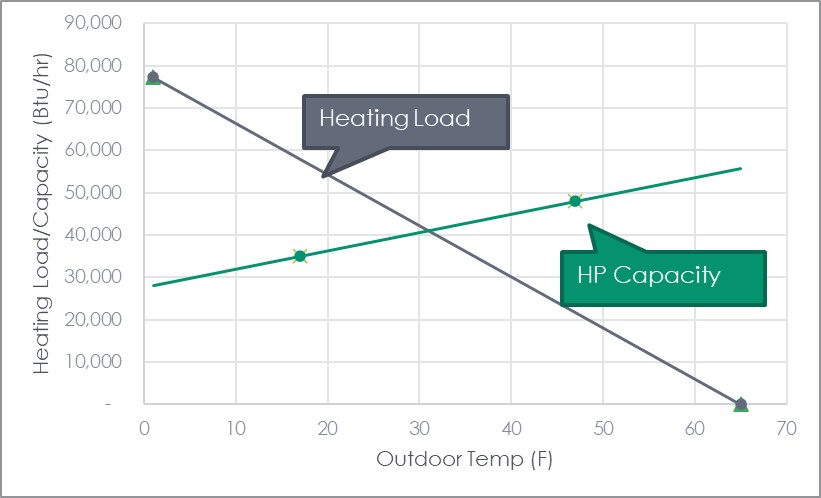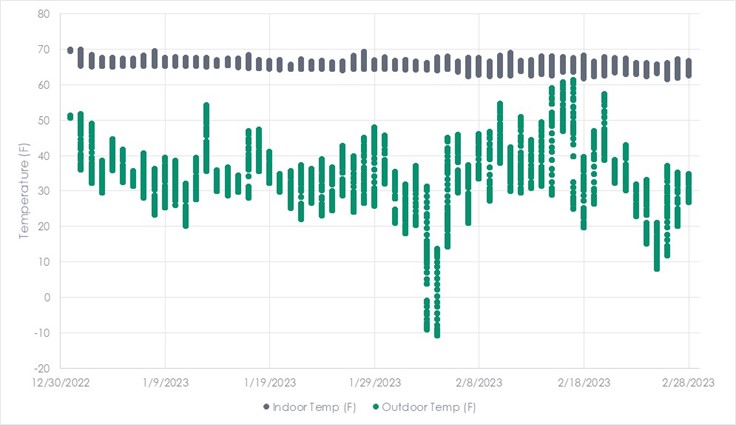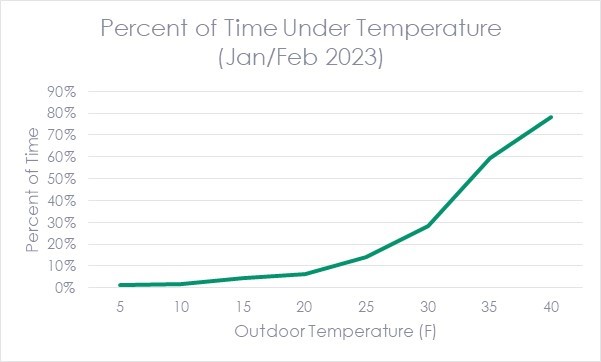Electrify Most Things!
Electrification can provide so many benefits, relating to efficiency, safety and comfort, and climate, that there is growing refrain to “electrify everything,” especially for buildings and transportation. I fully believe that electrification presents the best way to address climate change. However, retrofitting existing buildings is complicated. After recently running into some real-world roadblocks installing a heat pump in my home, a better battle cry might be: “Electrify Most Things!”
Background
Starting with my shift to an induction cooktop, I have been planning to shift my home in Massachusetts to all-electric as opportunities presented themselves. My house is a perfect candidate: it has cheap electricity provided by a municipal electric company, solar panels, and uses fuel oil for heat. So when a power surge[1] took out the control boards and ECM of my furnace this summer, I decided to take the plunge and replace my central AC and oil furnace with a heat pump.
My hopes to go all-electric (i.e., heat pump only) were swiftly dashed when my contractor calculated that my heating load would be too great for a single heat pump to maintain a comfortable temperature in the winter. Unless I wanted to rely extensively on electric resistance heating, I would need to either install two central heat pumps or a single central heat pump and supplemental ductless heat pumps, both of which were outside my budget. So, we made the decision to install a dual fuel system, with an oil furnace backing up the heat pump.[2]
Although I am disappointed about not being able to shift completely away from fossil fuel, this setup does provide a few benefits. First, without having to worry about meeting to the full heating load, I was able to reduce the size the system to more closely fit my cooling loads, which should improve the system’s efficiency in the summer. Additionally, because the furnace will need to run well above 0ºF (more on this in the next section), the COP of the heat pump will remain high whenever it is in use. Thirdly, I was also able to increase the efficiency of my furnace.
Switchover
So how does this all work? In a dual-fuel system, a controller (e.g., my smart thermostat) decides which system (the heat pump or the fossil fuel system) to use based on the outdoor air temperature. It prioritizes the heat pump above a set temperature, called a switchover temperature, and selects the fossil fuel system below that point. There are two concepts to keep in mind: the economic switchover temperature and the balance point.
The economic switchover temperature is the point at which the cost to operate the fossil fuel system is less than the heat pump, accounting for the efficiency of each system and the cost of each fuel. A Massachusetts study found that the economic switchover for oil furnaces is 5ºF (same for propane) and around 35 to 40º for natural gas furnaces (using 2021/2022 prices). My economic switchover is probably lower than that because my electricity rate is relatively lower than the rest of the commonwealth and because my house has solar. The economic switchover temperature depends on the ratio between the costs of electricity and the fossil fuel. All things equal, the high cost of oil, relatively low cost of electricity, and great performance of new heat pumps would mean that I should just get rid of the oil furnace all together assuming the system is properly sized.
However, as I wrote earlier, the specifics of my house and my budget means that the system cannot be properly sized. As the outdoor temperature drops, heat pumps become less efficient while at the same time, heat from inside your home is lost through the building shell, and more heat is needed to replace it. In other words, the heating load is going up, and the heating capacity is going down. At some point, the heating load will become greater than the heating capacity, and supplemental heat be needed to maintain the internal temperature (i.e., meet the full heating load of the home). This is called the balance point.
I graphed out the rough balance point of my system below.[3] It looks like my balance point is right around 32ºF.

When my contractor set up my thermostat with the switchover temperature of 35ºF, I was worried that my decision to install a dual fuel system was a bad choice and that I had squandered my opportunity to substantially decrease my carbon emissions. But being an energy nerd, I decided to dig in.
Impact of a Dual Fuel System
First, I wanted to see how often the outdoor temperature in my area fell under 32ºF. I figured out that I can download data from my Ecobee thermostat and looked at January and February 2023 (and made some charts).[4]

In the two months I looked at, the outdoor temperature was below freezing 41% of the time. As you can see in the chart below, this drops quite a bit below this temperature: it is below 30ºF 28% of the time and below 25ºF only 14% of the time. This winter I will definitely play around with the set points, because it seems like there are lots of potential energy and cost savings if I can decrease the switchover temperature even by a few degrees.

Savings Impacts of Partial Electrification
For my project, I will see positive energy savings because I replaced minimum standard efficiency heating and cooling equipment with high efficiency equipment. This will be true regardless of the switchover temperature I ultimately use (within reason). However, this represents the site-level savings. To get a true understanding of the carbon impact of only partially electrifying, we need to consider the source energy.
To compare energy used at the source, we need to think about the total fuel required to generate and distribute the energy to the site, including all transmission, delivery, and generation losses. As a rule of thumb, for every Btu of electricity consumed on-site, about three Btus of energy are required at the source.
New England has a relatively clean electric grid (539.4 lbs of CO2/MWh compared to the national average of 852.3). About half of New England’s electric generation is from natural gas, about a quarter is from nuclear, and less than 1% is from coal. While wind and solar combine for only about 6% of total generation, my house has PV panels (which releases no carbon and has no line losses), meaning that the electricity used by my heat pump is likely less carbon intensive than the regional New England average.
Burning heating oil is relatively carbon intensive at 163.45 lbs CO2/MMBtu compared to 116.65 for natural gas.[5] This is roughly the same as the carbon intensity of electricity in New England (158.08 lbs CO2/MMBtu) after factoring in all of the generation and transmission losses.[6] However, because heat pumps are much more efficient than electric resistance heating, with a COP of about 3 in the temperature range I would be using the system, the carbon intensity of a Btu from my heat pump will be roughly one-third of a Btu from my furnace. This means that any time I can use the heat pump instead of the furnace will result in a significant reduction in carbon emissions. That said, with a reasonable switchover temperature of around 25-30ºF, my system will still likely be less than half as carbon intensive as a fossil fuel system.[7]
Bottom Line
Electrifying buildings is an excellent way to decrease carbon emissions and to help mitigate climate change. However, as the example of my house shows, retrofitting existing buildings is complicated and full electrification may not be reasonable in many buildings for a variety of reasons. But if all realistic electrification opportunities are maximized, buildings can still achieve substantial reductions in carbon emissions. Every significant step towards decarbonization helps and we cannot let the perfect be the enemy of the good, so let’s work to electrify most things.
[1] I recommend installing a whole-house surge protector if you do not like major unplanned equipment replacement.
[2] Although my town has natural gas, my street does not, so I am limited to fuel oil or propane.
[3] Note that this is just based on rules of thumb about the heating load and isn’t based on a professional load calculation (I didn’t want to bug my contractor).
[4] Oddly, no one else in my house was as excited about this as I was.
[5] These carbon intensities account for the burning of the fuel in the furnace, but do not include any of the drilling, pumping, or transportation costs to get the fossil fuel to the house or any leakage.
[6] Another reason to electrify is that as more renewables are added to the grid, the average carbon intensity of electricity is expected to decrease over time.
[7] A lot of assumptions and simplification went into this paragraph. A more precise estimate would include time of day/year, the outdoor temperature, the system’s COP at different temperatures, etc.

.png)